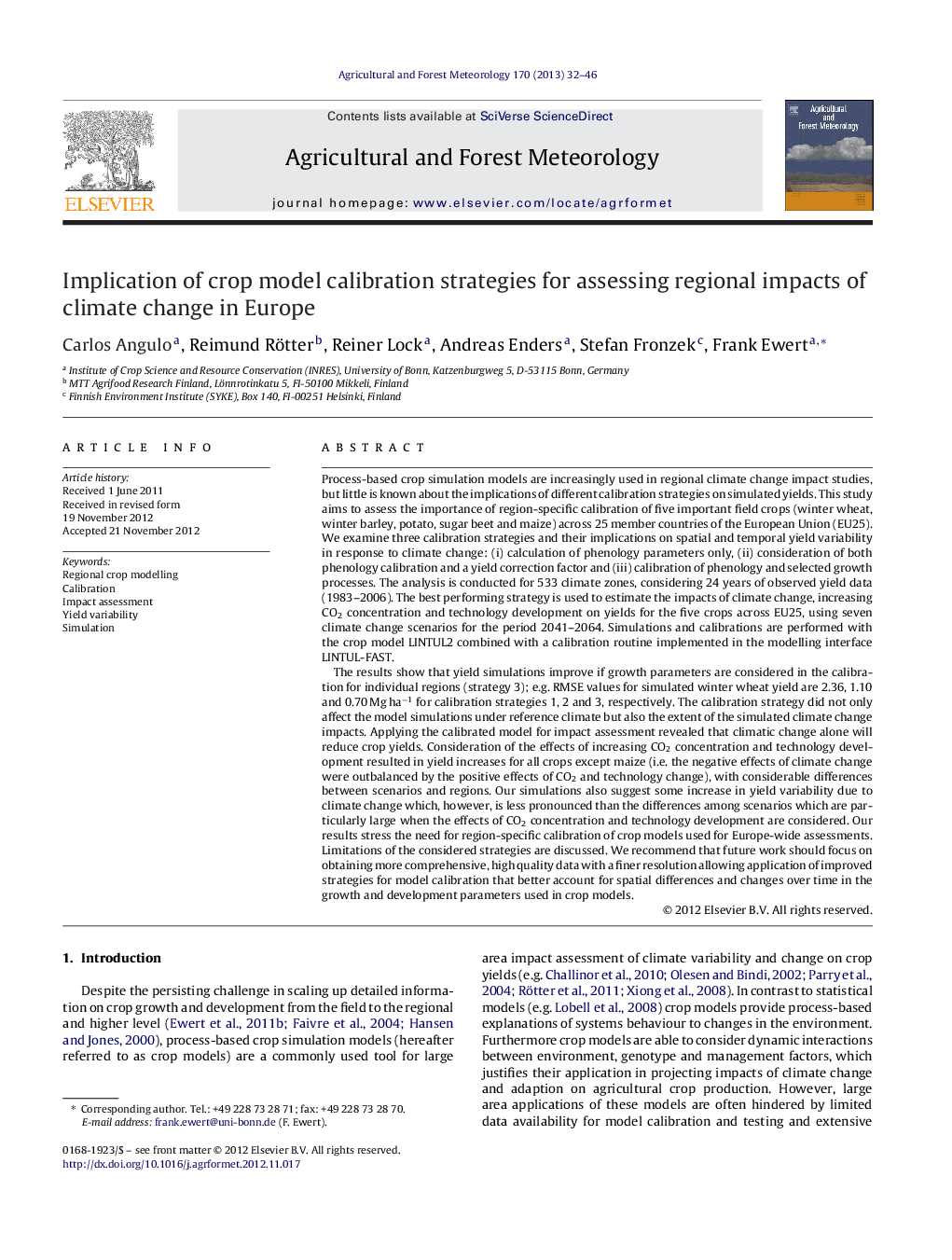| کد مقاله | کد نشریه | سال انتشار | مقاله انگلیسی | نسخه تمام متن |
|---|---|---|---|---|
| 81819 | 158353 | 2013 | 15 صفحه PDF | دانلود رایگان |

Process-based crop simulation models are increasingly used in regional climate change impact studies, but little is known about the implications of different calibration strategies on simulated yields. This study aims to assess the importance of region-specific calibration of five important field crops (winter wheat, winter barley, potato, sugar beet and maize) across 25 member countries of the European Union (EU25). We examine three calibration strategies and their implications on spatial and temporal yield variability in response to climate change: (i) calculation of phenology parameters only, (ii) consideration of both phenology calibration and a yield correction factor and (iii) calibration of phenology and selected growth processes. The analysis is conducted for 533 climate zones, considering 24 years of observed yield data (1983–2006). The best performing strategy is used to estimate the impacts of climate change, increasing CO2 concentration and technology development on yields for the five crops across EU25, using seven climate change scenarios for the period 2041–2064. Simulations and calibrations are performed with the crop model LINTUL2 combined with a calibration routine implemented in the modelling interface LINTUL-FAST.The results show that yield simulations improve if growth parameters are considered in the calibration for individual regions (strategy 3); e.g. RMSE values for simulated winter wheat yield are 2.36, 1.10 and 0.70 Mg ha−1 for calibration strategies 1, 2 and 3, respectively. The calibration strategy did not only affect the model simulations under reference climate but also the extent of the simulated climate change impacts. Applying the calibrated model for impact assessment revealed that climatic change alone will reduce crop yields. Consideration of the effects of increasing CO2 concentration and technology development resulted in yield increases for all crops except maize (i.e. the negative effects of climate change were outbalanced by the positive effects of CO2 and technology change), with considerable differences between scenarios and regions. Our simulations also suggest some increase in yield variability due to climate change which, however, is less pronounced than the differences among scenarios which are particularly large when the effects of CO2 concentration and technology development are considered. Our results stress the need for region-specific calibration of crop models used for Europe-wide assessments. Limitations of the considered strategies are discussed. We recommend that future work should focus on obtaining more comprehensive, high quality data with a finer resolution allowing application of improved strategies for model calibration that better account for spatial differences and changes over time in the growth and development parameters used in crop models.
► We test three calibration strategies for Europe-wide yield simulations of 5 crops.
► Region-specific calibrations improve simulations of spatial and temporal yield variability.
► Choice of calibration strategy affects simulated yield responses to climate change (CC).
► Projected yield responses to CC are larger for summer than for winter crops.
► CC effects are superseded by increasing [CO2] and technology development for all crops but maize.
Journal: Agricultural and Forest Meteorology - Volume 170, 15 March 2013, Pages 32–46